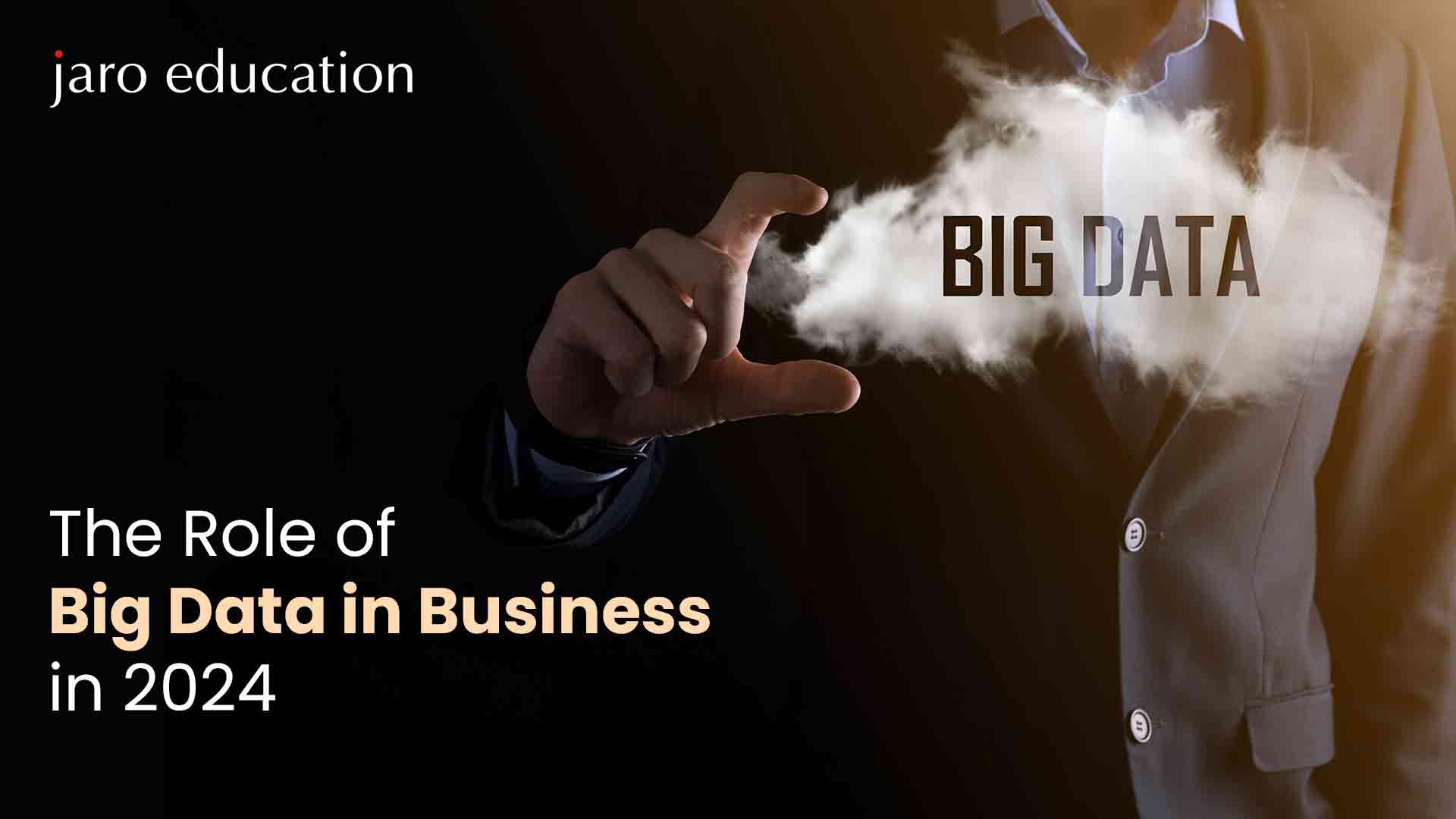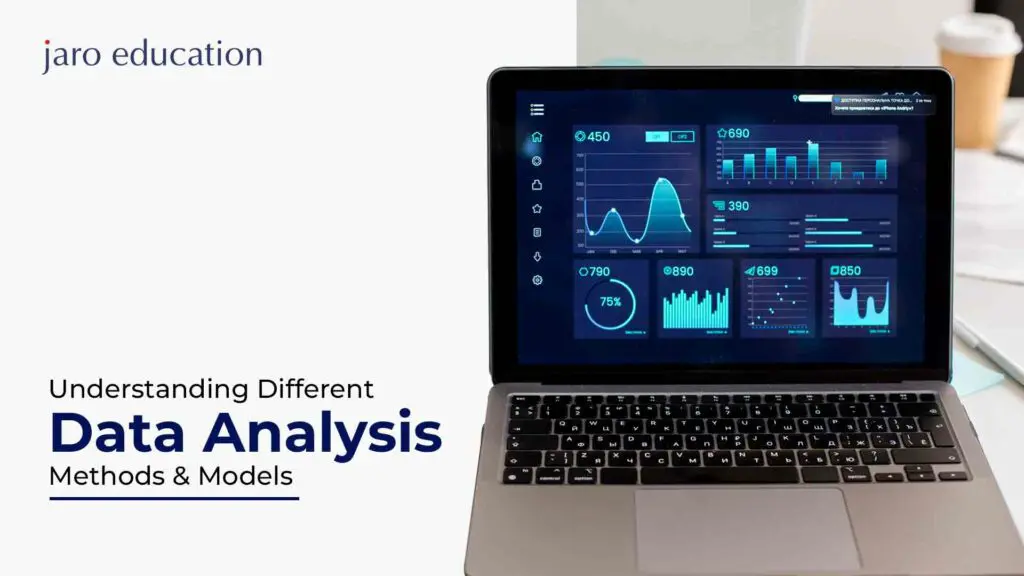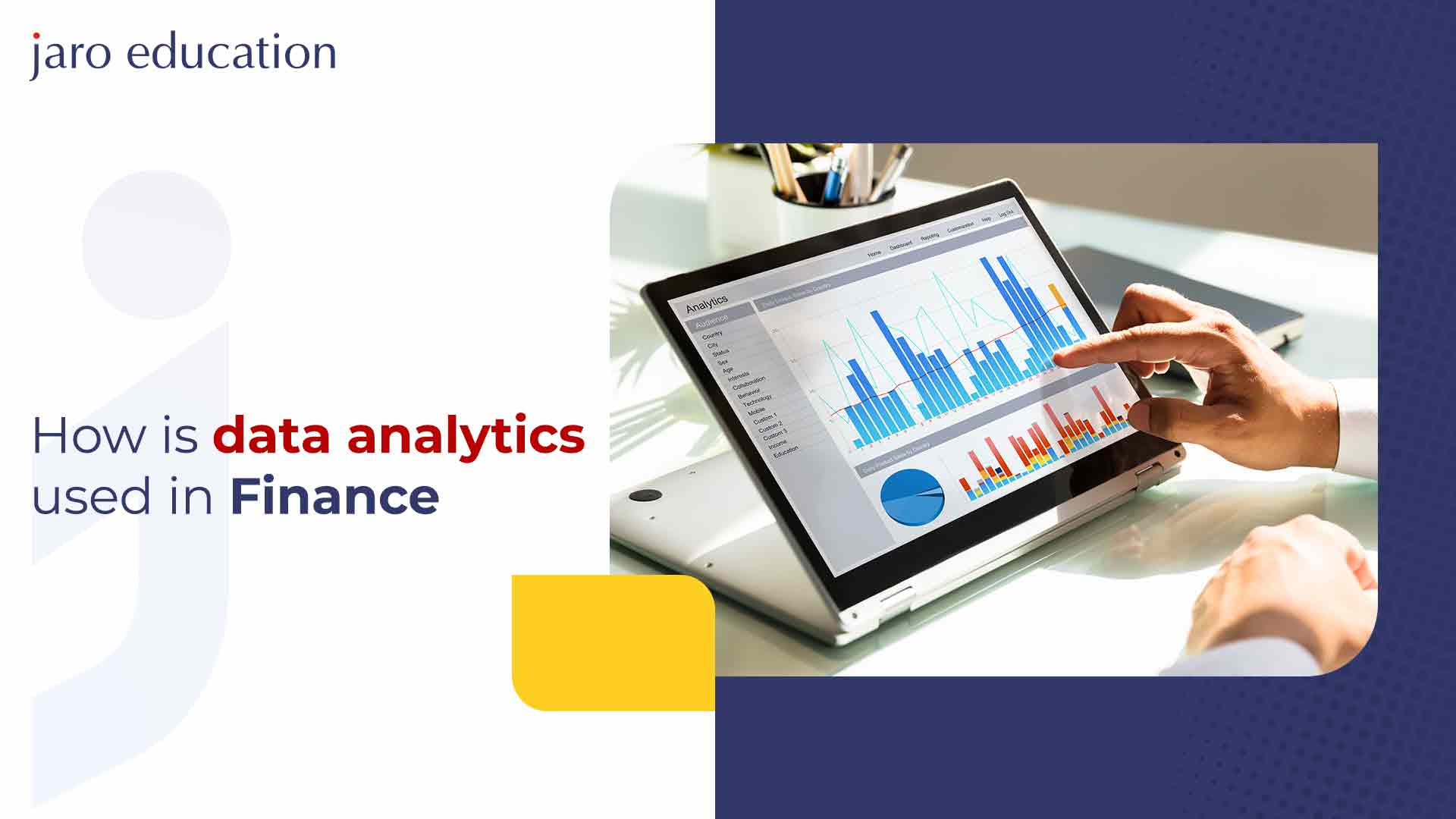Power of Big Data in Business: Definition, Strategic Significance and Examples
Table of Contents

- jaro education
- 12, January 2024
- 9:00 am
Big data encompasses datasets of such magnitude, speed, or complexity that traditional processing methods find them challenging or even impossible to handle effectively. While the storage and analysis of substantial volumes of information have been prevalent for an extended period, the conceptualization of big data gained substantial traction in the early 2000s.
This surge in attention was notably marked by industry analyst Doug Laney, who introduced the widely accepted definition of big data characterized by three core dimensions, commonly known as the three V’s: volume, velocity, and variety. These elements collectively capture the essence of big data, emphasizing the substantial scale, rapid generation, and diverse nature of the information sets involved. The evolution of big data reflects not only its sheer size but also the dynamic and intricate challenges posed by its high-speed generation and the varied formats in which it manifests.
What Is Big Data?
In the past decade, the exponential growth in data collection, coupled with technological advancements, has given rise to a new breed of data-driven companies actively seeking innovative ways to analyze and derive insights from extensive datasets. This paradigm shift towards a data-centric approach has defined a landscape where businesses, prioritize big data analytics as a cornerstone of their organizational strategy, leading with IT innovation.
Big data, in essence, refers to datasets that transcend the processing capabilities of traditional software. The primary sources of this voluminous data include sensors and mobile devices, such as GPS trackers, along with the prolific data generated on social media platforms like Facebook. As companies expand, so does the magnitude of data they accumulate. Amazon, for instance, exemplifies a company leveraging big data analytics to its fullest potential by collecting a diverse array of measurements daily on virtually every item in its extensive product listings. This wealth of data serves as a valuable resource for understanding customer preferences and market trends, thereby benefiting the business in strategic decision-making.

*spiceworks.com
This advanced technology empowers data scientists to execute intricate analytics algorithms on terabytes of data, unveiling hidden patterns and insights. The real-time analysis enabled by this approach empowers companies to stay ahead of the curve, responding promptly to emerging trends.
For those professionals keen on immersing themselves in the exciting domains of data science and artificial intelligence, the “Executive Programme in Applied Data Science using Machine Learning & Artificial Intelligence” offered by CEP, IIT Delhi, stands as a holistic opportunity to elevate expertise in these forefront areas.
Strategic Significance Big Data in Business
Embracing big data analytics has become increasingly imperative for businesses as they expand and scale. This innovative approach enables companies to harness large volumes of data, traditionally beyond the processing capabilities of conventional software. With the advent of cloud computing and enhanced processing technologies, industry giants like Google and Amazon have successfully leveraged big data analytics to propel their businesses forward, gaining valuable insights in areas such as marketing and product development.
One of the key benefits lies in the ability of business big data analytics to provide a nuanced understanding of customer behavior. This comprehension serves as a strategic foundation for refining marketing efforts, fostering stronger customer relationships, and ultimately driving revenue growth. Furthermore, it offers companies a means to gain profound insights into the activities and strategies of their competitors, enhancing their competitive edge in the market.
How Big Data Works?
Leveraging the potential of big data necessitates a methodical approach to comprehend its intricate flow across diverse locations, sources, systems, owners, and users. Orchestrating what is often referred to as the “big data fabric” requires businesses to navigate through a dynamic convergence of traditional, structured data, and the more intricate realms of unstructured and semi-structured data. To adeptly harness the power inherent in big data, organizations should undertake a strategic journey involving five key steps:
1. Formulate a Comprehensive Big Data Strategy
Crafting a successful big data initiative commences with the development of a robust strategy. This strategic foundation involves articulating clear objectives, aligning them with organizational goals, and delineating the methodologies and technologies to be employed. A well-defined strategy serves as a guiding framework, ensuring a purposeful and structured approach to handling extensive and diverse datasets.
2. Identify Big Data Sources
The big data encompasses a multitude of sources, ranging from traditional, structured data to the intricacies of unstructured and semi-structured data. The identification of these sources is a critical step, requiring a comprehensive survey of internal and external data streams. This meticulous process ensures that organizations are cognizant of the entire spectrum of data available, providing a foundation for well-informed decision-making.
3. Establish Robust Access, Management, and Storage Protocols
The operationalization of a big data strategy involves the establishment of efficient mechanisms for accessing, managing, and storing data. This includes the creation of streamlined processes for data collection, the implementation of robust data management practices, and the utilization of appropriate storage solutions. As data volumes burgeon, considerations for scalability, security, and accessibility become imperative to ensure the seamless flow and utilization of big data across the organizational landscape.
4. Conduct In-Depth Data Analysis
The subsequent critical step involves the in-depth analysis of the accumulated data. This encompasses the application of advanced analytics and data processing techniques to extract meaningful insights, uncover patterns, and derive actionable intelligence. Thorough data analysis is pivotal in transforming raw data into strategic knowledge, offering organizations a competitive edge through informed decision-making.
5. Make Intelligent, Data-Driven Decisions
The ultimate objective of the big data journey is to facilitate intelligent, data-driven decision-making. Armed with insights derived from comprehensive analysis, organizations can make informed choices that align with their strategic goals. This final step completes the iterative process, creating a continuous feedback loop that refines strategies based on ongoing data-driven insights.
Case Study: Spotify
Spotify, the music streaming service, relies on big data to provide a personalized and seamless music experience for its users. With a vast catalog of songs and a diverse user base, Spotify leverages data analytics to understand user preferences, curate playlists, and enhance overall satisfaction.
Challenges
Personalized Music Recommendations
Spotify faces the challenge of delivering music recommendations tailored to individual user tastes. This requires analyzing extensive data on listening history, genres, and user-created playlists.
Content Licensing and Artist Relations
To ensure a diverse music catalogue, Spotify must navigate complex licensing agreements and maintain positive relationships with artists. Data helps in understanding user preferences and negotiating content deals effectively.
User Retention and Engagement
With competition in the music streaming industry, retaining users and keeping them engaged pose ongoing challenges. Spotify uses data to understand user behavior and preferences to enhance its platform.
Big Data Solutions
Music Recommendation Algorithms
Spotify employs advanced algorithms to analyze user behavior, including listening history, likes, skips, and time spent on specific songs. This data is used to generate personalized playlists and discover weekly recommendations.
Dynamic Playlist Curation
Playlists like “Discover Weekly” and “Release Radar” are dynamically curated based on user preferences and real-time listening habits. Big data ensures that these playlists are tailored to individual tastes.
User Behavior Analytics
Spotify tracks user interactions with the platform to gain insights into user behavior. This includes understanding when users are most active, which features they use frequently, and how they engage with different genres.
Having witnessed the transformative impact of big data in the music streaming space, professionals aspiring to delve into data science and artificial intelligence can explore further opportunities. The “Executive Programme in Applied Data Science using Machine Learning & Artificial Intelligence” offered by CEP, IIT Delhi, provides a structured approach for professionals seeking to enhance their skills in these cutting-edge fields. This program serves as a practical gateway to harnessing the potential of data science and AI in real-world scenarios.
Conclusion
The strategic adoption of business big data analytics emerges as a cornerstone for companies, providing a multitude of advantages that transcend conventional business practices. The insights it provides become a driving force for increasing revenue, making it a must-have for companies aiming for long-term success. By adopting a robust big data analytics solution, businesses position themselves to unlock a range of advantages, affecting various aspects of their day-to-day activities.
The key benefits include a deeper understanding of customer behavior. This means businesses can tailor their strategies more precisely. By analyzing how customers interact, their preferences, and the trends they follow, companies can create targeted initiatives that strengthen relationships with customers and enhance their standing in the market.









1 thought on “Power of Big Data in Business: Definition, Strategic Significance and Examples”
Thanks! If you have any more questions or need further insights, feel free to ask or connect with us.